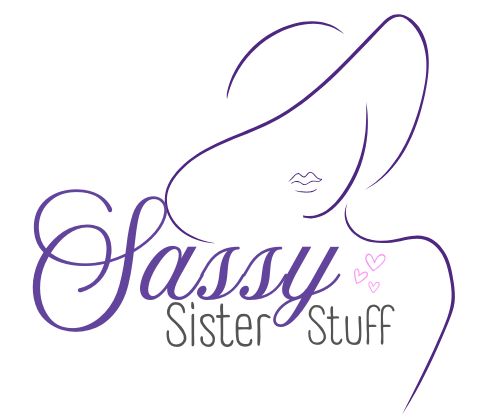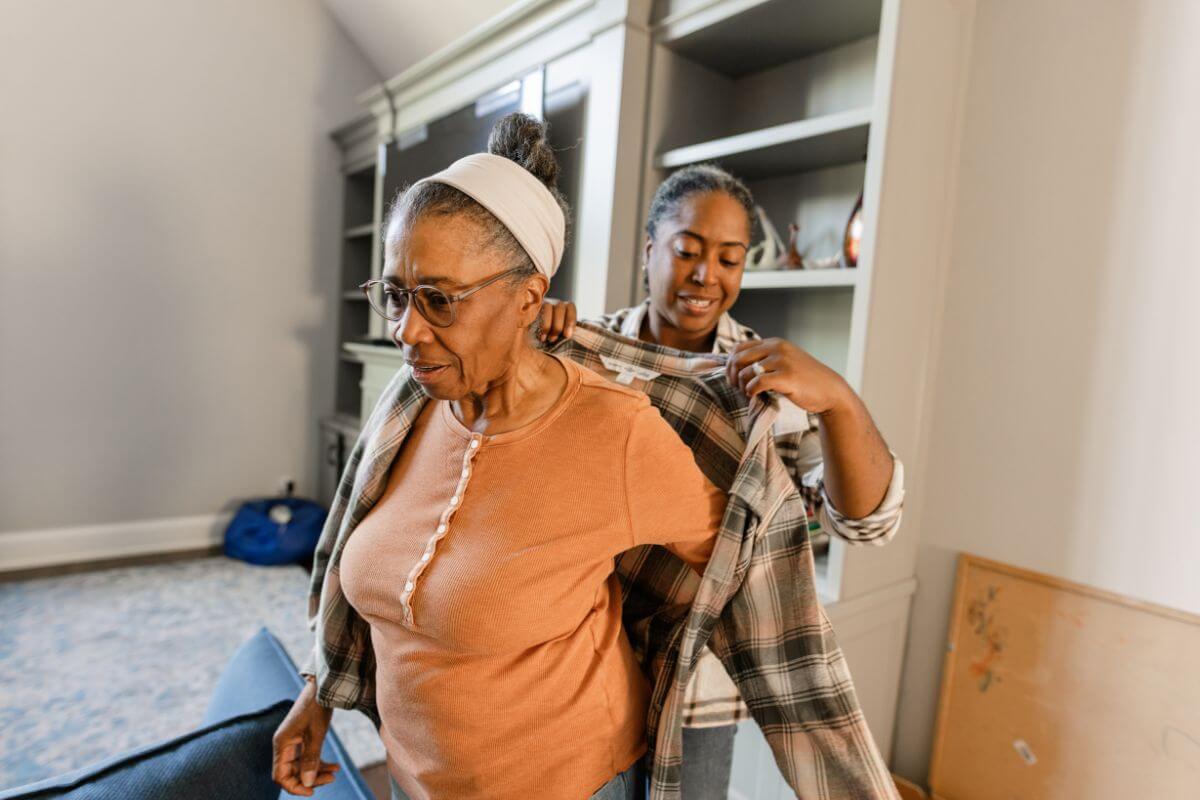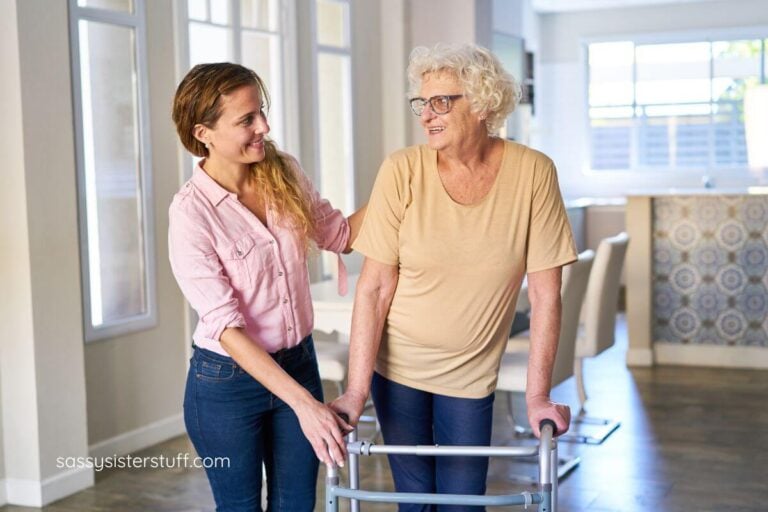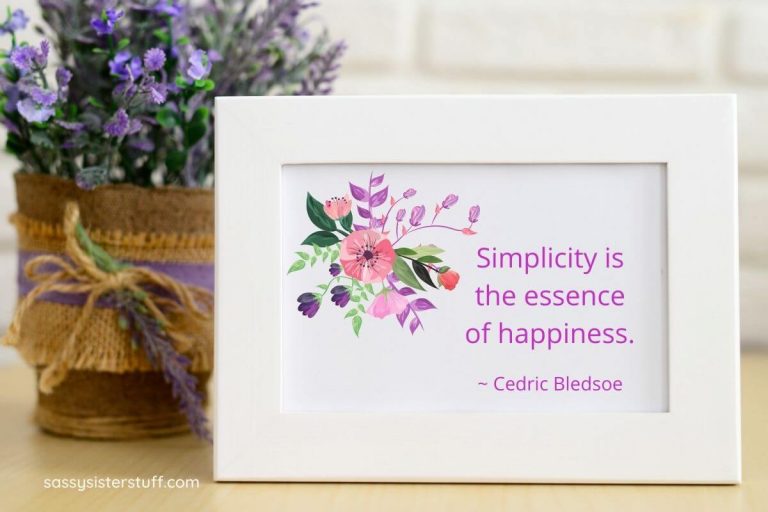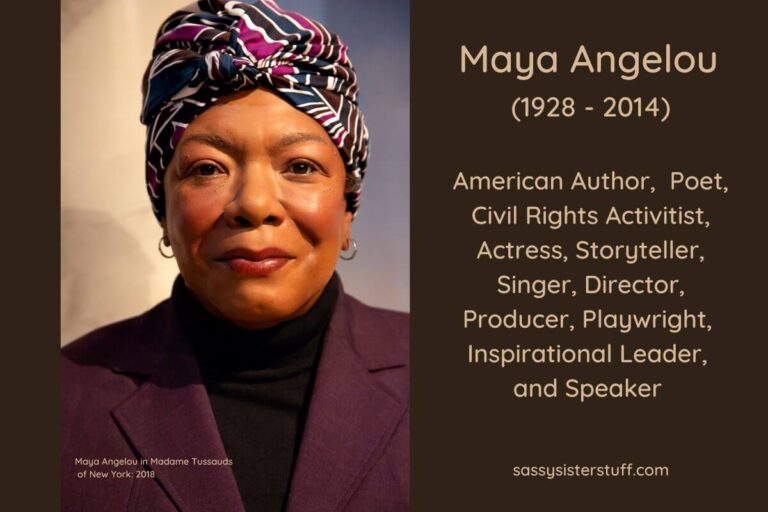Adaptive Clothing for Seniors: Where Functionality Meets Fashion
Welcome to the world of adaptive clothing for seniors, where functionality meets fashion! Imagine clothes that adjust and adapt to your unique needs. Whether it’s easy-to-fasten closures, stretchy fabrics, or clever designs, adaptive clothing is all about making life simpler and more stylish for seniors and people with disabilities.
But adaptive fashion isn’t just for seniors and people with disabilities anymore. It’s for anyone who wants comfort, versatility, and style. Whether you’re recovering from surgery, dealing with a temporary injury, or just want clothes that feel as good as they look, adaptive fashion can be for you!
In this article, we’ll take a closer look at the world of senior adaptative clothing. From its innovative features to how designers are trying to keep it fashionable, we’ll tell you everything you need to know about senior adaptive clothing, clothing for those with physical or cognitive disabilities, and clothing for those who prefer easy dressing.
Family caregivers will find this information helpful as you navigate the unique needs of seniors and the entire process of caring for your loved one with compassion, while allowing them to maintain their sense of dignity.
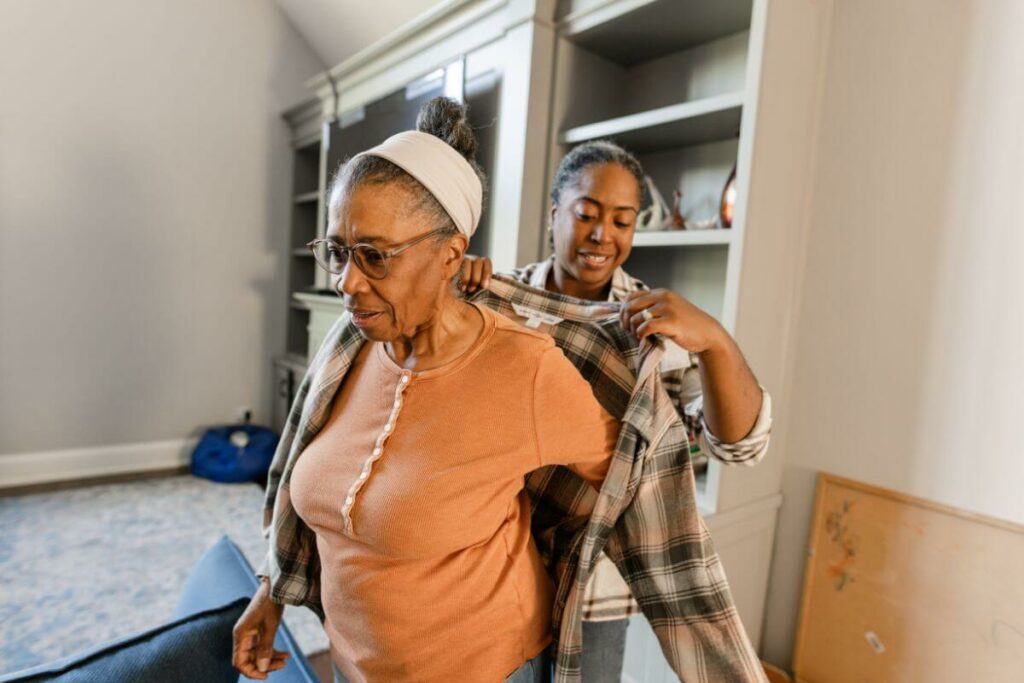
Key Takeaways
- Today senior adaptive clothing combines style and functionality, offering innovative features like easy-to-fasten closures, elastic waistbands, and comfortable material to make dressing easier for seniors and others.
- This specialized clothing is revolutionizing the way older adults and others dress, providing them with stylish options that prioritize comfort and ease of use.
- From everyday activities to special occasions, senior adaptive clothing ensures that seniors and others with cognitive or physical limitations can look and feel their best without sacrificing comfort or convenience.

What is Adaptive Fashion?
Adaptive fashion is a special category of clothing designed to meet the unique needs of wheelchair users, senior women, people with Parkinson’s disease, dementia patients, people with cognitive or physical disabilities, special needs, mobility challenges, or anyone who struggles with regular clothing due to impairments and limitations.
Unlike traditional clothing, which does not necessarily take into account factors such as limited mobility, dexterity, or sensory sensitivity, adaptive fashion incorporates innovative design features that increase comfort, functionality, and ease for its users. Thus, the dressing process becomes easier for everyone.
Everyone deserves to feel like a million bucks in their clothes. Adaptive fashion is not just a trend; it is a revolution. It’s about breaking down barriers and saying, “Hey, you matter, and we have the perfect outfit for you.”
You should be able to purchase adaptive clothing at your local department store or online adaptive clothing sites, but we are not quite to the point where adaptive clothing is part of mainstream fashion yet.
What is Adaptive Clothing’s Purpose?
Adaptive apparel aims to promote inclusion and independence, as well as the human dignity of people with disabilities and medical conditions that make dressing difficult. It offers clothing solutions that allow people to dress more comfortably and confidently. It recognizes the diverse needs and experiences of the disability community and strives to provide a wide range of options to meet those needs.
Adaptive fashion can benefit older people or anyone who has difficulty wearing traditional clothing due age-related changes in movement or dexterity.
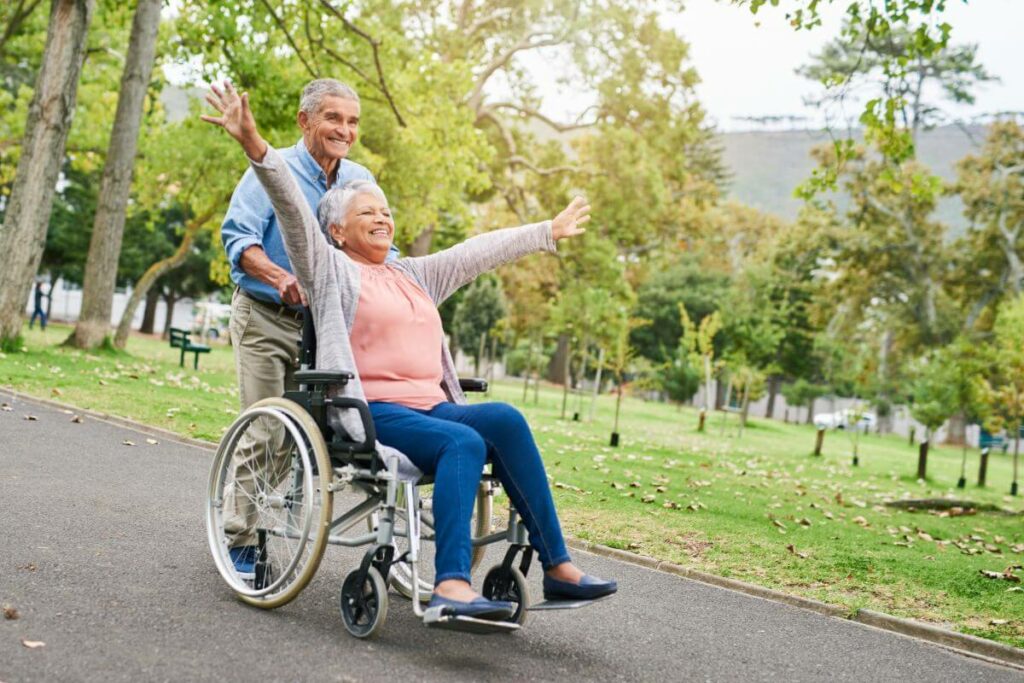
How Does Adaptive Clothing for Seniors Meet Fashion without Compromising Purpose?
Adaptive clothing responds to fashion trends by combining elegant design elements and aesthetic aspects, while prioritizing the functionality and comfort important to users. In this way, adaptive fashion can find a balance between staying on trend and achieving its goal.
Innovative Designs
Adaptive fashion designers are constantly working to ensure that their clothes remain fashionable and meet the specific needs of their target audience. They experiment with new materials, construction techniques, and design features to create clothing that is both stylish and functional. They try to avoid frumpy frocks while focusing on ease of movement, ease of dressing, sensitive skin, easy access, comfortable clothing, and helpful features.
Collaboration with Designers
Many adaptive fashion brands collaborate with leading fashion designers to bring their style and aesthetic expertise to adaptive clothing lines. Their collaboration results in clothing that reflects current fashion trends and incorporates seamless adaptive features. Buck & Buck and Joe & Bella are two brands that focus on the very best results for adaptive clothing options that remain on trend. Tommy Hilfiger Adaptive is a high-profile designer brand that provides disabled and senior adaptive clothing.
I have found that these online places have a wide selection of nice adaptive clothing, also: Geri Fashions, Ovidis, and Silverts.
Inclusive Fashion Shows and Campaigns
Adaptive fashion brands often present their collections through inclusive fashion shows and campaigns featuring models with disabilities. In doing so, they not only emphasize the wearability and functionality of their clothing but also show that adaptive fashion can be just as stylish and trendy as traditional fashion.
But it’s not just about making a statement on the runway; it’s about changing people’s lives. Imagine the joy of being able to dress independently, express your style with confidence, and knowing that your outfit was made with you in mind.
That’s the magic of adaptive fashion — it’s fashion with a heart.
Inclusive clothing includes adaptive tops and short-sleeved shirts for independent dressing. In particular, elderly women are quite conscientious about their wardrobe and appreciate the availability of senior adaptive wear. Options such as side zippers and an elastic waistband help with functional designs.
By embracing adaptive fashion, we don’t just change clothes; we change minds. We challenge outdated norms and redefine what it means to be fashionable. We’re sending the message loud and clear — diversity is beautiful, and inclusion is undeniable.
Customization Options
Some adaptive fashion brands offer customization options that allow customers to customize their clothes according to their preferences and style. This customization can include color, pattern, fit, and design details so that users can stay true to their individual style by taking advantage of adaptive features. For example, many older women find a short sleeve snap front housedress is much easier to access and more practical than a housecoat with a zipper or buttons.
Stay on Trend
Adaptive fashion designers are aware of current fashion trends and consumers. They conduct market research, trend analysis, and preferences of the target group. By understanding what’s popular in the fashion world, they can incorporate elements of these trends into their designs in a way that remains relevant and appealing to their customers.
Adaptive fashion brands actively seek feedback from their customers, including individuals with disabilities so as to understand their changing needs and preferences. This feedback loop allows designers to continuously improve their designs and ensure that their garments remain fashionable and functional over time.
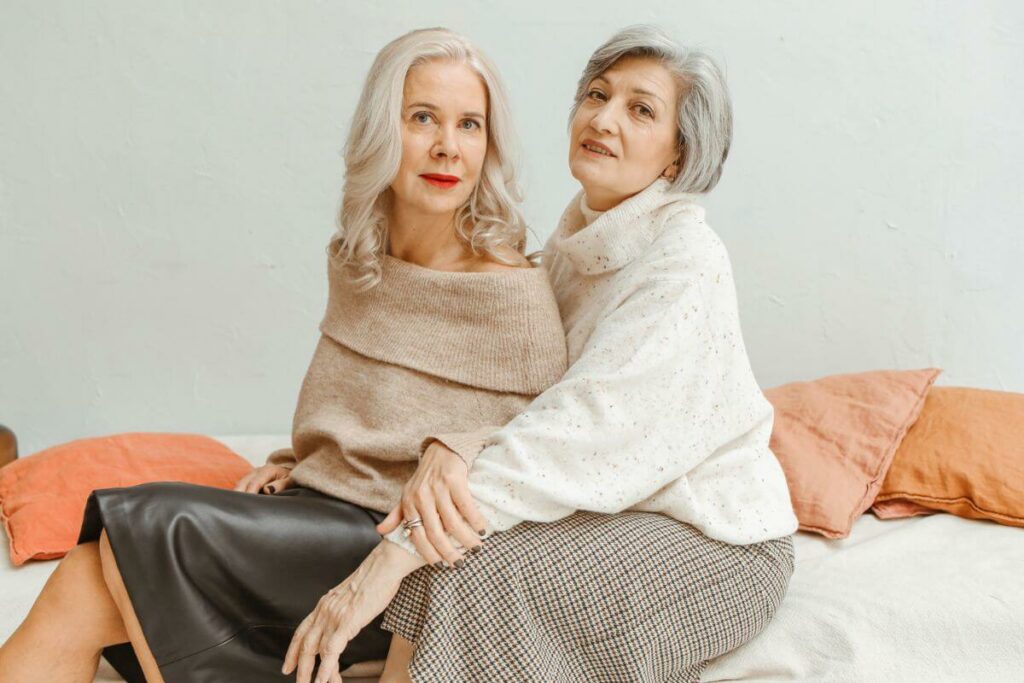
Various Types of Senior Adaptive Clothing
Senior adaptive clothing comes in many forms, each tailored to the specific needs and challenges or unique requirements of people with disabilities. I’ve listed some examples of several types of adaptive clothing below.
Seated Clothing
Designed specifically for people who spend a lot of time in a seated position. Mobility clothing has adaptations such as reinforced seat panels, elastic belts, stretchy fabrics, and closures such as Velcro fasteners for wheelchair-access users comfortably.
Magnetic Closures
Garments with magnetic closures instead of traditional buttons or zippers are ideal for people with limited dexterity or strength, as they can be easily attached and removed with little effort.
Easy-on, Easy-off Styles
Garments with open backs, wide openings, side or front openings, or adjustable fasteners allow people with mobility impairments or caregivers to easily get on and off whether they are standing, sitting, or lying down. For instance, Velcro bras are popular among those who prefer adaptive clothing.
Velcro bra straps make access easier for those with mobility issues, comfort without the discomfort of traditional closures, and precise adjustability for a custom fit. Seniors with mobility issues can find it difficult to find a comfortable fit, especially for bras that close in the back and are uncomfortable. They can be difficult to put on, especially if there is limited arm or hand mobility.
This is where Velcro bras come into play. Say goodbye to those struggles and hello to Velcro Bras, designed with comfort and support in mind. Easy to wear, pull the bra around your body, tighten the Velcro straps and you’re ready to move in comfort all day. For women, a bra is a common piece of clothing that is a fundamental part of our identity. The Velcro bra helps to maintain personal style and peace of mind. Unfortunately, department stores rarely offer this type of garment.
Adaptive Footwear
Shoes and socks with Velcro straps, stretchy materials, wider openings or removable midsoles adapt to different foot shapes, sizes and mobility difficulties. Some adaptive shoes also have features such as seamless interiors and non-slip soles for added comfort and safety.
Related Article: Supportive Footwear for Caregivers and Women on Their Feet All Day
Sensory-Friendly Clothing
Clothing made from soft, breathable fabrics without scratchy labels and seams or embellishments are helpful for people with sensory sensitivities or conditions such as autism or bipolar disorder. These clothing options prioritize comfort and minimize sensory overload. They use high-quality materials that help the individual maintain their sense of style.
Post-Operative or Medical Clothing
Adaptive clothing for post-surgical recovery or medical needs includes features such as adjustable closures, elastic waist pants, pre-fitted bras, and compression garments that provide support and ease pain, and facilitate recovery. These products also make it easier for family members and healthcare workers to provide assistance with recovery.
Incontinence Clothing
Clothing with unobtrusive built-in or removable linings, moisture-wicking fabrics, and easily accessible openings helps people manage incontinence with dignity and comfort while maintaining independence. There are a variety of incontinence products that can be purchased in a big box store or a medical equipment store.
Adaptive Swimwear
With easy-to-open features, adjustable straps, and built-in support, an adaptive swimsuit is designed to adapt to different body shapes and movement needs, allowing people to comfortably enjoy swimming and water activities. Since aqua therapy and water activities are highly recommended for seniors and those with mobility issues, adaptive swimwear is important.
Temperature Regulation Clothing
Adaptive clothing with moisture-wicking, breathable fabrics or ventilation panels to help regulate body temperature, make it suitable for people with conditions that affect thermoregulation, such as multiple sclerosis or diabetes.

Final Thoughts
Adaptive fashion is a positive step toward greater inclusion and accessibility in the fashion industry. Adaptive clothing is designed to meet specific needs and increase comfort, independence, and confidence for seniors and people with disabilities; thankfully, the industry is growing. We are seeing more adaptive clothing features such as velcro closures, open-back designs for wheelchair clothing, and stretchable fabrics that meet the unique needs of individuals.
I hope the information in this article has helped you develop awareness about senior adaptive clothing and clothing for those with special needs. Everyone deserves to look and feel their best, regardless of their abilities or challenges.
You might find these Related Articles helpful:
- Senior Care Items to Improve Hygiene and Quality of Life
- 21 Simple Ways to Make Home Safe for Senior Citizens
Love to ALL! ~ Susan
